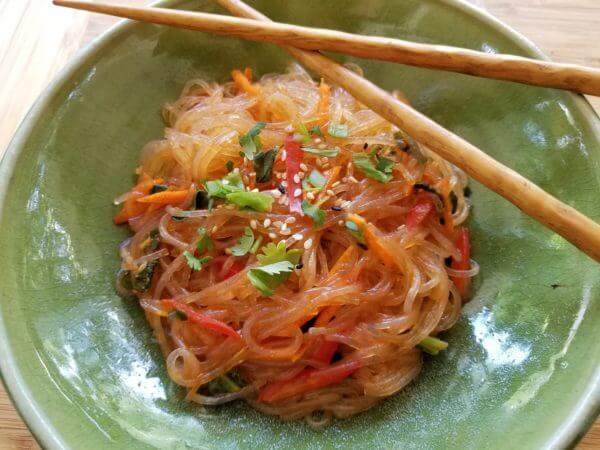
Gluten-Free Asian Food and Traditions
Rice is King…and Gluten-free!
Fortunately there are options. Rice, especially whole grain rice, is a tasty and healthful gluten-free food. With the availability (and accurate labeling) of gluten-free soy sauce (traditionally fermented with wheat and sometimes called tamari), you can have your fried rice and eat it, too. Rice flour can also be mixed with tapioca starch and/or potato starch to create a gluten-free baking mix.
In many Asian countries, rice holds symbolic and spiritual meaning and always been more than a base food. Japan holds sacred rituals and festivals around the planting and harvesting of rice. The focal point in making perfect sushi is the rice, not the fish. In China, rice has a place in language, art, work and politics: it is associated with life, prosperity and fertility. The actual word for cooked rice,fan, is a general reference for all things food-related. And “rice bowl” (fan wan)is a metaphor for one’s social status. In India, basmati rice is considered a luxury food and offered in religious rites.
Yu’s Your Noodle
Noodles have a long history in Asia. The world’s oldest known noodles were discovered in an earthenware bowl along the Yellow River in China. The noodles were approximately 4,000 years old and made of foxtail and broomcorn millet. Italian-style pasta is almost always made of durum semolina wheat, and distinguished by shape. Asian pasta is usually of the string variety but can be made of rice, mung bean, sweet potato, buckwheat, tapioca, soy, acorn, kudzu root, even kelp. That’s great news for pasta lovers looking for alternatives to wheat.
Asian-style rice noodles are readily available in many markets now and are indispensable in stir fries like Pad Thai, soups like Vietnamesepho,or salads like Szechuan beef noodle salad. Chewy sweet potato noodles are delicious stir fried with sesame oil and vegetables in Japchae – a Korean noodle dish. Japanese 100 percent buckwheat soba noodles are tasty served simply with a touch of tamari sauce and scallions.
Check all food labels carefully. A product may be naturally gluten-free but cross-contamination is a risk. Condiments may contain wheat-based additives, like regular soy sauce or rice vinegars, so you may want to request plain rice for sushi rolls. Unfortunately, labeling varies by country but companies have started making Asian products that are certified gluten-free.
Sticky Topic: Gluten vs. Glutinous
But many have wrongly confused Asianglutinousrice (also known as “sticky” or “sweet” rice) with dietary gluten which is the basis of gluten intolerance. There is no gluten or wheat in glutinous rice. The term refers to a variety of short-grain rice that has been grown in China and Southeast Asia for nearly 2,000 years. It is very sticky and glue-like and featured mostly in desserts and populardim sumitems like sesame balls filled with sweet red bean paste. Fun fact: Glutinous rice is so sticky that it was used in the mortar to build the Great Wall of China!

Asian Gluten-Free Tips & Recipes
When buying soy sauce, look for naturally brewed tamari or gluten free varieties. More seem to be on the shelves of quality grocery stores these days.
Premium quality rice is a great gluten-free alternative and there are several Asian varieties like Himalayan red rice, Japanese sushi rice, Indian basmati rice and more. I enjoy Lotus Foods brand in the USA and Kokuro Rose from Japan. Try Lotus Foods Forbidden Black and Bhutanese Red.
Our family-recipe, award-winningMy Sweet Hottie sweet chili peachsauce, dressing & glaze is zesty and flavorful with Bursts with real fruit, ginger, honey and sesame but is soy free, gluten free and very low sodium. NO junky syrups or excess sugars.Flavor of Georgia Winner. Delicious for slaw/salads, fish tacos, natural Sweet and Sour Chicken or Sweet and Sour Shrimp and dipping sauce for appetizers and vegetables.
